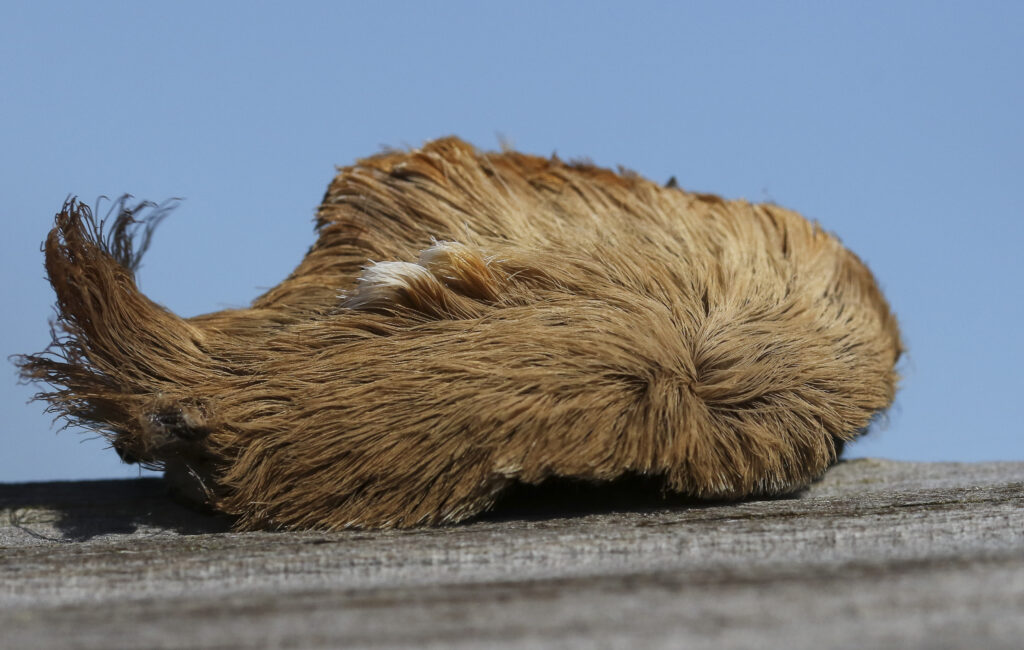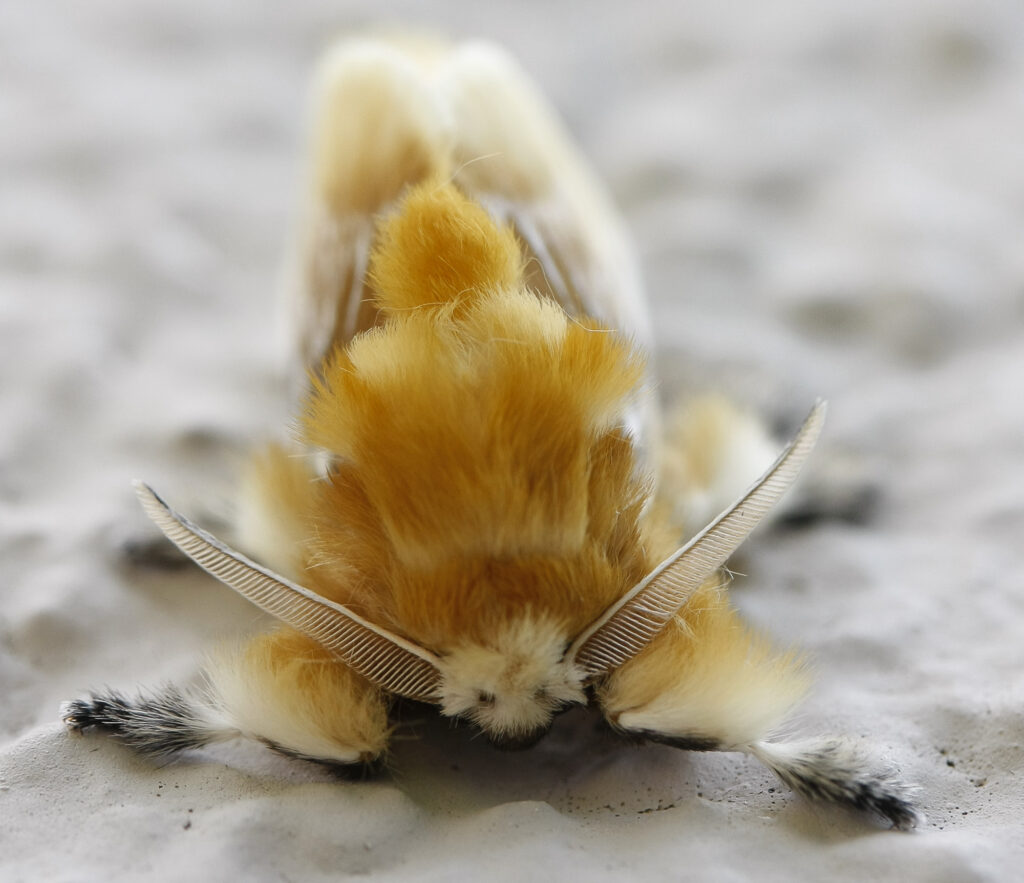Fuzzy Danger

Resist the urge to pet this fuzzy friend
By Wayne Bierbaum
I took a day trip to Assateague Island last week. The weather was great and the ponies were out— I saw 19. During one of our walks to the marsh viewing areas within the national seashore, my wife saw a brown fuzzy thing on the boardwalk railing. The inch-long brown mass of hair had no visible legs, eyes, or even a head, but it was slowly moving. I recognized it as the caterpillar of the southern flannel moth, also known as a puss caterpillar.
The puss caterpillar is the most venomous caterpillar and possibly the most poisonous insect in North America. The bug has several nicknames: the asp caterpillar, the tree asp, the woolly slug, the fire caterpillar, and the toupee bug. The thick, stiff hair that covers the caterpillar hides numerous venomous spines. The spines are hollow and will inject a powerful toxin when touched. Worse, the spines can continue to inject poison for a prolonged period even when removed from the caterpillar’s skin.
The venom is said to cause immediate severe pain. The pain has been described as being as severe as a broken arm. Hemorrhagic (bloody) blistering frequently occurs. The initial pain can last a day but persistent swelling and milder pain at the site frequently lasts weeks. Permanent scarring has been reported.
Occasionally, the reaction can be quite severe, causing difficulty breathing, chest pain, nausea, and severe swelling. Several near-death reactions and many hospitalizations have been reported but I could not find documentation of any fatality.
The adult form of the caterpillar is the southern flannel moth, which does not have spines but it is quite hairy and may also cause skin irritation when touched.
In the spring, the southern flannel moth emerges from a protective chrysalis. After mating, the female lays eggs in oak or elm trees. The caterpillar emerges and goes through an instar form before becoming a full-sized one-inch caterpillar. The hair color may be anywhere from a golden yellow to a drab brown. They have a narrower hairy tail that is twisted upward. Unusually, they are said to avoid soiling their eating areas and have the ability to shoot stool pellets some distance—several inches.
In the fall, after getting their fill of leaves, the mature caterpillars come out of the trees to find a spot on the ground for their winter metamorphosis into a chrysalis. In the chrysalis state, they are protected from the cold and slowly transform into a moth. That may have been the reason we found this caterpillar crawling on the handrail at the barrier island—it was looking for a wintering spot.
The puss caterpillar is a southeastern species; Maryland is at the upper edge of its range and Texas is at the western edge. They are most common in Florida and are particularly fond of southern live oaks. When I lived in Florida, I remember finding them in the pocket of convex live oak leaves.
Most people are stung by incidental contact—when the bugs are blown out of a tree or when someone is doing tree trimming, etc. Because of how potentially dangerous they are, children should be taught not to play with fuzzy caterpillars even though their appearance makes it tempting for curious children to touch them. September and October seem to be the time when most injuries occur.
For other caterpillars that should be avoided, see my column last year on Stinging Caterpillars (https://bayweekly.com/creature-feature-76/).

